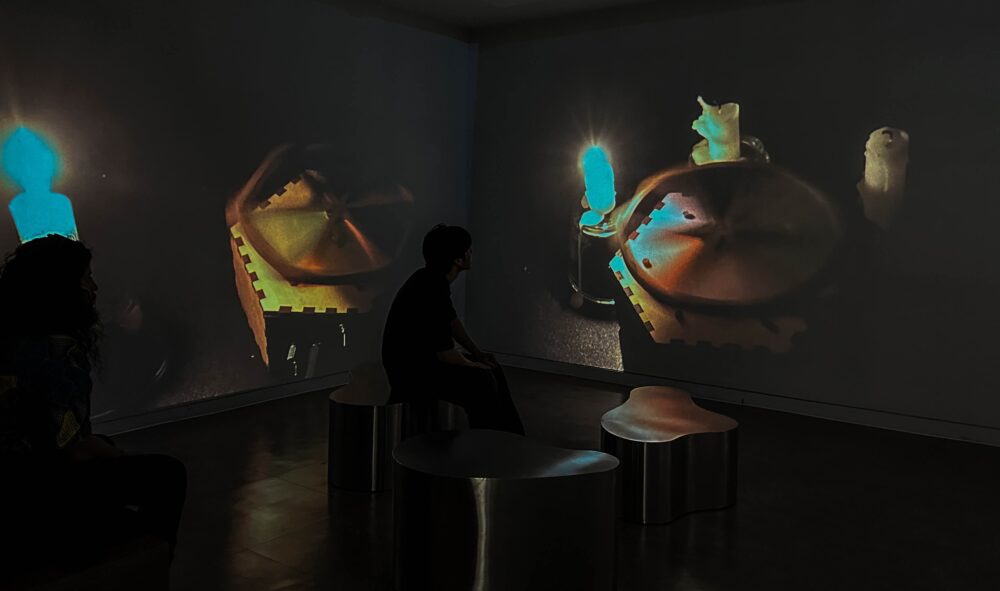Luma Sonic Revolutions (LSR) is a 3-channel video and multichannel sound installation. The goal is to showcase three handmade instruments that are performed via matches, candles, and rotating filters. The instrument’s raw output is mixed with real-time generative and acousmatic processing built in Max and Ableton software. In jumping from black screen to naked flame while leaping from barely audible match strike to a burst of synthesised sound, we are exploring extreme dynamic range, light sensitive electronics, and the physical qualities of scale and iteration. The video cube setup disrupts traditional cinematic and performance norms, placing activities around and behind the audience. Overall, the intensity of the sound and visuals is designed to create an immersive sensory experience.
We explore what Louise Harris has termed “expanded audiovisual formats”. Key practitioners/works in this field include Christian Marclay’s “Video Quartet” and “Crossfire” as well as Louise Harris’s “Alocas”. We also draw from the kinetic sculpture of Arthur Ganson, the sound/installation of Zimoun, and Myriam Bleau’s “Soft Revolvers”. The aim is to 1) celebrate performative gestures in an audiovisual context, and 2) initiate a sonic dialogue between bespoke hardware synthesis and computer-based audio processing. Our research question is: what might our bespoke interactive instruments become in a fixed media/installation context?
LSR was double-blind peer-reviewed by an international jury and chosen for inclusion in the International Computer Music Conference (ICMC) 2024 in Seoul, South Korea. ICMC was hosted by Hanyang University College of Music and CREAMA (Center for Research in Electro-Acoustic Music and Audio). LSR was installed at Hanyang University Museum and had sole use of its open video cube and immersive sound system throughout ICMC.
